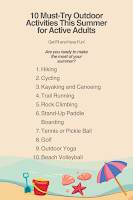Boosting Sales for a Startup Product on a Budget: Techniques for Success
Launching a new product as a startup with limited resources can feel daunting. However, some of the most effective marketing and sales techniques require little to no money—just time, creativity, and consistency. In this guide, we’ll explore practical ways to generate sales and build a customer base, focusing on strategies accessible to startups on a budget. From social media hacks to email marketing, here’s how you can begin to see meaningful growth without spending a fortune.
1. Focus on Your Unique Value Proposition (UVP)
Before jumping into tactics, it’s essential to have a clear Unique Value Proposition (UVP). Your UVP is what sets your product apart and speaks directly to the needs and desires of your target audience. This will be the foundation of every marketing message you share. To create a compelling UVP, consider the specific problems your product solves, and why it’s different from the competition. Highlight this consistently across all channels.
2. Build a Social Media Presence
Social media platforms are some of the most cost-effective channels for reaching and engaging with potential customers. Here’s how to make the most of them:
- Identify Your Audience and Platform: Not all platforms will serve your needs equally. If you’re selling visually appealing products, Instagram and Pinterest are ideal for sharing images. For B2B products, LinkedIn might be more effective.
- Consistent Posting and Engaging Content: Consistency builds momentum and helps establish credibility. Aim to post regularly, and create value-driven content—posts that educate, entertain, or inspire your followers.
- Leverage User-Generated Content: Encourage satisfied customers to share photos and reviews of your product. User-generated content builds trust and often comes across as more authentic.
- Use Stories and Reels: Short-form content such as Instagram Stories, Reels, or TikTok videos tends to get more engagement and allows you to show your product in action.
3. Collaborate with Influencers and Micro-Influencers
Influencer marketing doesn’t have to involve big budgets. Many influencers with smaller audiences (micro-influencers) are often willing to promote products in exchange for free samples or a small fee. These collaborations can provide a powerful boost in credibility and reach:
- Choose Relevant Influencers: Look for influencers who align with your brand values and audience demographics. They don’t need to have massive followings; authenticity is more important.
- Offer a Mutually Beneficial Deal: Instead of direct payment, consider offering exclusive content or products in exchange for promotion. Highlight the benefits and unique features of your product to ensure they genuinely believe in what they’re promoting.
4. Content Marketing and Blogging
Content marketing is an excellent way to build organic traffic to your website. Start a blog or content page that offers valuable insights, tips, or advice related to your product’s industry.
- SEO-Optimized Content: Make sure your articles are optimized for search engines. Keywords relevant to your niche can help attract people searching for similar products.
- Educational Content: Content that educates, such as how-tos or industry updates, positions your brand as a trusted resource. For example, a startup selling eco-friendly products could post about the importance of sustainability.
- Repurpose Content for Multiple Platforms: Take a blog post and break it into several social media posts, videos, or infographics to get the most mileage out of each piece.
5. Engage in Email Marketing
Email marketing can deliver one of the highest returns on investment, especially for startups. An email list allows you to engage with customers directly, update them on new products, and offer exclusive promotions.
- Build an Email List from Day One: Offer a small incentive, like a discount or free e-book, for people who sign up. Include an email subscription form on your website and social media pages.
- Personalize Content and Offers: Segmentation is key to effective email marketing. Tailor your content to different groups within your list to make the communication more personal and relevant.
- Automate Your Campaigns: Set up automated sequences, such as welcome emails, cart abandonment reminders, and post-purchase follow-ups, to nurture leads and drive sales.
6. Build and Nurture a Community
Creating a community around your brand can drive loyalty and word-of-mouth marketing.
- Engage on Social Media: Respond to comments, host Q&As, and even share behind-the-scenes glimpses of your journey as a startup. Showing personality and openness helps humanize your brand.
- Use Facebook Groups or Online Forums: Facebook groups or forums provide platforms to share tips, receive feedback, and build a loyal community that believes in your product.
- Host Webinars or Live Sessions: These are great for demonstrating the product, sharing knowledge, and connecting directly with your audience.
7. Offer Limited-Time Discounts or Special Promotions
Scarcity and urgency are powerful motivators. Running limited-time discounts can drive sales, especially when targeted at new customers.
- First Purchase Discounts: Offering a small discount on a first purchase can help nudge hesitant customers toward trying your product.
- Bundling and Upselling: Bundle products to increase sales value, or suggest complementary items at checkout to drive additional purchases.
- Reward Referrals: Set up a referral program that rewards customers for bringing in new business. This can encourage word-of-mouth promotion without needing a large advertising budget.
8. Leverage Free Online Tools
Many digital tools offer free plans with valuable marketing and sales features. Here are a few examples:
- Email Marketing Tools (Mailchimp, Sendinblue): These tools help you set up and manage email marketing campaigns without significant cost.
- Graphic Design (Canva): With Canva, you can create professional-looking graphics for social media, emails, and ads without hiring a designer.
- Social Media Management (Buffer, Hootsuite): Manage and schedule posts across multiple platforms, ensuring you stay consistent.
9. Use Customer Reviews and Testimonials
Customer reviews play a significant role in driving sales by building trust and social proof.
- Encourage Satisfied Customers to Leave Reviews: Send a follow-up email asking for feedback or reviews. This helps build credibility and encourages others to buy.
- Showcase Testimonials on Your Website and Social Media: Positive feedback can be showcased in social media posts, on product pages, and even in email newsletters.
- Use Reviews in Ad Campaigns: Highlight positive reviews in any advertising efforts to enhance credibility and increase click-through rates.
10. Focus on a Customer-Centric Approach
Customer-centricity—putting your customers’ needs at the center of everything you do—helps in building trust, loyalty, and a strong brand image.
- Personalize Interactions and Communications: Tailor your email campaigns and social media messages to create a personalized experience that resonates with individual customers.
- Excellent Post-Purchase Support: A smooth customer experience doesn’t end at the sale. Offering guidance, support, and follow-ups can lead to repeat business and referrals.
- Ask for Feedback and Improve: Regularly seek feedback to understand what your customers want and how you can improve. This will show that you value their opinions and are committed to quality.
11. Track and Optimize Your Efforts
Even with a limited budget, you should monitor the performance of your marketing tactics to understand what works best.
- Analytics Tools (Google Analytics, Facebook Insights): Use free analytics tools to track visitor behavior, traffic sources, and engagement.
- Test and Adapt: Try A/B testing on emails, social posts, or website elements to see which approach drives the best results. Constant adaptation is key to refining your strategy and driving sales.











